Native News Online Staff
Fri, January 5, 2024

The moon has long been revered by Indigenous people.
The Coalition of Large Tribes, an organization representing more than 50 tribes with reservations of 100,000 acres or more, signed on to the Navajo Nation’s request for consultation before NASA sends human remains to the moon.
On Jan. 8, NASA has plans to launch a rocket to the moon containing human remains, based on a contract it has with two private companies that make up part of the agency’s commercial arm.
Among the 28 payloads, or cargo on a rocket, going to the moon are some by Celestis and Elysium Space, companies known for providing memorial services by shipping human cremated remains.
Navajo Nation President Buu Nygren wrote a Dec. 21 letter to Transportation Secretary Pete Buttigieg, NASA Administrator Bill Nelson, and Transportation Assistant Secretary for Tribal Government Affairs Arlando Teller objecting to the mission without proper tribal consultation for a sacred place.
“It is crucial to emphasize that the moon holds a sacred position in many Indigenous cultures, including ours,” President Nygren wrote. “We view it as a part of our spiritual heritage, an object of reverence and respect. The act of depositing human remains and other materials, which could be perceived as discards in any other location, on the Moon is tantamount to desecration of this sacred space.”
In his letter, Nygren said this situation was a repeat of an event in the late 90s when NASA sent a rocket carrying the remains of a former astronaut to the moon.
“At the time, Navajo Nation President Albert Hale voiced our objections regarding this action. In response, NASA issued a formal apology and promised consultation with tribes before authorizing any further missions carrying human remains to the Moon,” President Nygren wrote.
On Jan. 4, COLT tribal chairman Marvin Weatherwax sent a similar letter as Nygrens to Buttigieg, Nelson, and Teller.
“As there has been no tribal consultation on the matter, the Coalition of Large Tribes demands that the launch either be delayed or that the cremated remains be removed from the payload until there has been appropriate tribal consultation,” Weatherwax wrote.
“Celestial bodies play an important role in our ceremonial life and cultural heritage for most, if not all Tribes in the United States. NASA has acknowledged this and, on its own website, stated: ‘The Indigenous Peoples Initiative focuses on building relationships across NASA and Indigenous communities through place-based remote sensing training, community engagement, and co-production of knowledge, and yet ignores its own commitment.”
NASA did not respond to Native News Online’s request for comment. But NASA representatives addressed the controversy during a Jan. 4 meeting, according to Space.com.
"We don't have the framework for telling them what they can and can't fly," said Chris Culbert, Commercial Lunar Payload Services (CLPS) program manager at NASA's Johnson Space Center in Houston. "The approval process doesn't run through NASA for commercial missions."
At the end of his letter, Weatherwax demanded tribal consultation be respected, “even when it is inconvenient.”
About the Author: "Native News Online is one of the most-read publications covering Indian Country and the news that matters to American Indians, Alaska Natives and other Indigenous people. Reach out to us at editor@nativenewsonline.net. "
Contact: news@nativenewsonline.net
Navajo Nation voices concerns with NASA over human remains being sent to moon
Rey Covarrubias Jr., Arizona Republic
Updated Fri, January 5, 2024
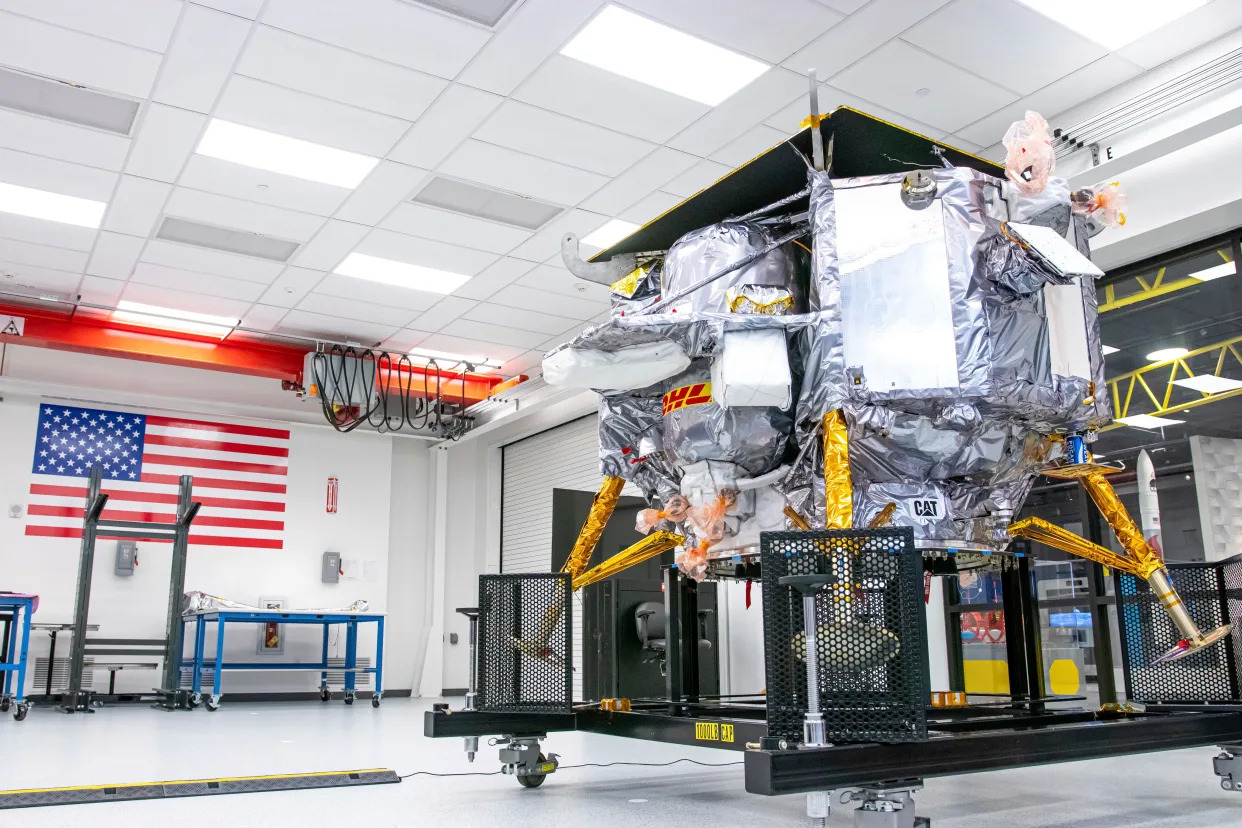
Navajo Nation President Buu Nygren vocalized the Indigenous community's objection to human remains being sent to the moon during a press conference Friday.
On Friday afternoon, Nygren held discussions with representatives from the White House, the Department of Transportation, and NASA. The purpose of the meeting was to express concerns regarding the scheduled launch of the Vulcan Centaur on January 8. This mission aims to land on the moon, carrying the Peregrine Mission One developed by Astrobotic Technology.
Among the 28 payloads scheduled for the launch, there was an inclusion from Celestis and Elysium Space. These companies specialize in memorial services and had plans to transport cremated human remains to the moon as part of their payload.
Nygren expressed the sentiment, "We're born here, and we should be left here as well when we move on." He communicated to reporters that he raised concerns with U.S. government officials, emphasizing that the Navajo Nation should have been provided with more thorough notice and consideration regarding the launch and its potential impact.
"Our moon is just so integral in everything that we do that there should be some respect, and respect some of the sacredness to the moon, and by having human remains up there constantly floating around the earth as we continue to exist here on Mother Earth, it's just of concern," said Nygren.
Nygren explained that the moon is used in ceremonies across Navajo and other Indigenous cultures as a prominent part of religious and spiritual beliefs.
Nygren mentioned that government officials conveyed to him their limited influence over the specifics of missions like the upcoming one. He explained that such missions are carried out by private entities, and government oversight primarily focuses on aspects such as safety and mission success. Nygren found this approach irresponsible, especially given the inclusion of human remains in the mission payload.
"These missions don't happen without NASA, so we can come up with something then to really try to focus on how we can collaborate and make sure that these future missions don't have human remains, just out of respect for the hundreds of tribes that exist here in the United States," said Nygren.
Navajo Nation: "uncompromising" activist Klee Benally dies at age 48
Nygren conveyed that he received "no strong affirmative response" from U.S. officials regarding the assurance that human remains would not be sent to the moon.
Nygren referred to former Navajo Nation President Albert Hale, who was in office during Nygren's youth. Nygren recalled how the late Hale took a stand against the sending of cremated remains, particularly those of former astronaut Eugene Shoemaker, to the moon in January 1998, and Nygren was a witness to this stance.
Nygren explicitly stated that the Navajo Nation wasn't attempting to claim ownership of the moon. Instead, he emphasized the profound significance of the concept of human life in Navajo culture. The Nation's desire is for the government to conduct its missions and space exploration in a manner that respects and incorporates Indigenous beliefs.
The Navajo Nation was consulting with other nationwide tribes on the issue, along with continued advice from Navajo traditional practitioners.
Nygren said in a news release in late December that the Biden Administration had previously promised to consult matters that impact tribes directly with their Indigenous governments.
NASA and the Department of Transportation did not immediately respond to the Arizona Republic's request for comment.
This article originally appeared on Arizona Republic: Buu Nygren of Navajo Nation shows concern for remains sent to moon
Navajo Nation’s objection to landing human remains on the moon prompts last-minute White House meeting
Kristin Fisher, CNN
Fri, January 5, 2024
The White House has convened a last-minute meeting to discuss a private mission to the moon — set to launch in days — after the largest group of Native Americans in the United States asked the administration to delay the flight because it will be carrying cremated human remains destined for a lunar burial.
If successful, the commercial mission scheduled to launch Monday — dubbed Peregrine Mission One — will be the first time an American-made spacecraft has landed on the lunar surface since the end of the Apollo program in 1972. But Navajo Nation President Buu Nygren said that allowing the remains to touch down there would be an affront to many indigenous cultures, which revere the moon.
“The moon holds a sacred place in Navajo cosmology,” Nygren said in a Thursday statement. “The suggestion of transforming it into a resting place for human remains is deeply disturbing and unacceptable to our people and many other tribal nations.”
The private companies providing these lunar burial services, Celestis and Elysium Space, are just two of several paying customers hitching a ride to the moon on Pittsburgh-based Astrobotic Technology’s Peregrine lunar lander. The uncrewed spacecraft is expected to lift off on the inaugural flight of the United Launch Alliance’s Vulcan Centaur rocket from Florida’s Cape Canaveral Space Force Station.
Celestis’ payload, called Tranquility Flight, includes 66 “memorial capsules” containing “cremated remains and DNA,” which will remain on the lunar surface “as a permanent tribute to the intrepid souls who never stopped reaching for the stars,” according to the company’s website.
“We are aware of the concerns expressed by Mr. Nygren, but do not find them substantive,” Celestis CEO Charles Chafer told CNN.
“We reject the assertion that our memorial spaceflight mission desecrates the moon,” Chafer said. “Just as permanent memorials for deceased are present all over planet Earth and not considered desecration, our memorial on the moon is handled with care and reverence, is a permanent monument that does not intentionally eject flight capsules on the moon. It is a touching and fitting celebration for our participants — the exact opposite of desecration, it is a celebration.”
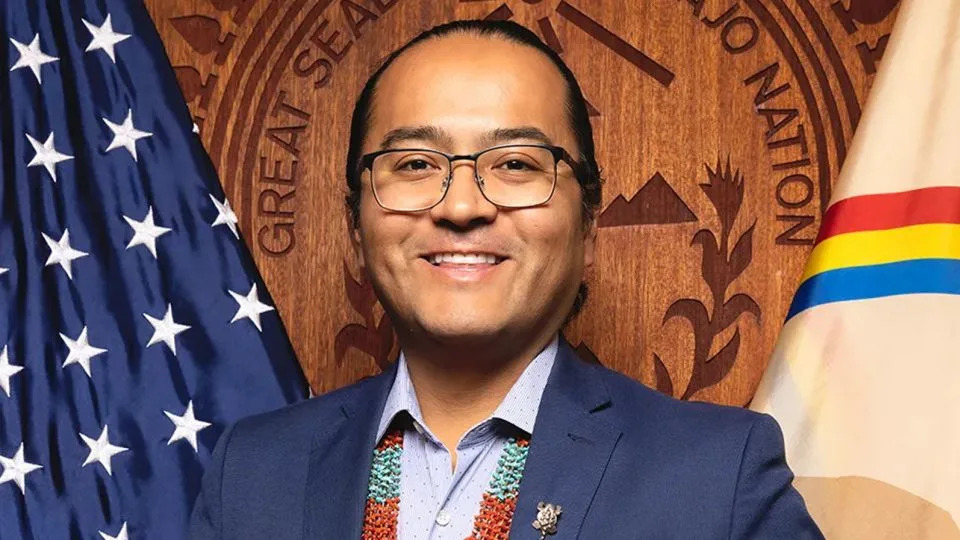
The moon is considered sacred in tribal cosmology, according to Navajo Nation President Buu Nygren. - The Navajo Nation Office of the President
Elysium Space has not responded to CNN’s request for a comment, but the company’s website describes its “Lunar Memorial” as delivering “a symbolic portion of remains to the surface of the Moon, helping to create the quintessential commemoration.”
“I’ve been disappointed that this conversation came up so late in the game,” John Thornton, Astrobotic Technology CEO, said. “I would have liked to have had this conversation a long time ago. We announced the first payload manifest of this nature to our mission back in 2015. A second in 2020. We really are trying to do the right thing and I hope we can find a good path forward with Navajo Nation.”
Dawn of the lunar economy
This isn’t the first time Navajo Nation has expressed concerns about burials on the moon. In a December letter to NASA Administrator Bill Nelson and Transportation Secretary Pete Buttigieg, Nygren referred back to NASA’s Lunar Prospector mission, which in 1999 deliberately crashed a spacecraft into the moon carrying the remains of former astronaut Eugene Shoemaker.
“At the time, Navajo Nation President Albert Hale voiced our objections regarding this action. In response, NASA issued a formal apology and promised consultation with tribes before authorizing any further missions carrying human remains to the Moon,” Nygren said.
While NASA is the primary customer on this mission, it’s still one customer among many paying to put technology and cargo on Astrobotic’s lunar lander.

Peregrine Mission One's official mission patch is shown. - Astrobotic Technology
The space agency paid Astrobotic $108 million to develop the lander and carry science experiments to the moon, said Sandra Connelly, deputy associate administrator of NASA’s science mission directorate in a Friday press call. The space agency also developed the Artemis Accords, a document that outlines what should and shouldn’t be allowed on the moon that has been signed by the US and 32 of its allies.
“We recognize that some non-NASA commercial payloads can be a cause for concern to some communities, and those communities may not understand that these missions are commercial. They’re not US government missions,” said Dr. Joel Kearns, NASA deputy associate administrator for exploration.
Peregrine Mission One marks the start of NASA’s Commercial Lunar Payload Services, or CLPS, initiative, which allows the US space agency to outsource the launch and transport of its lunar cargo to private companies. The mission is at the dawn of the lunar economy, and the rules are still evolving.
“American companies bringing equipment and cargo and payloads to the moon is a totally new industry — a nascent industry — where everyone is learning,” Kearns said. “We take concerns expressed from the Navajo Nation very, very seriously.
Nygren, who represents the roughly 430,000 enrolled members of the Navajo Nation, says the tribe is “not opposed to scientific progress or space exploration” but continues to hold “profound concerns regarding the lack of oversight and regulation of non-NASA commercial payloads, particularly when such payloads include human remains.
Who controls the moon?
The Federal Aviation Administration’s Office of Commercial Space Transportation is responsible for licensing all private space launches in the US. But by law, the office only has oversight in matters involving “the public health and safety, safety of property, and national security and foreign policy interests of the United States.”
“The Federal Aviation Administration’s role is statutorily limited to ensuring space flights do not pose a safety or national security threat to the United States,” a Department of Transportation spokesperson told CNN.
But the executive director for the Navajo Nation’s Washington Office, Justin Ahasteen, calls that argument “absurd.”
“They’re essentially suggesting that you can send anything into space. Does that mean people can send drugs? Does that mean people can send hazardous material? The lack of oversight is, I think, really concerning for the nation,” Ahasteen told CNN.
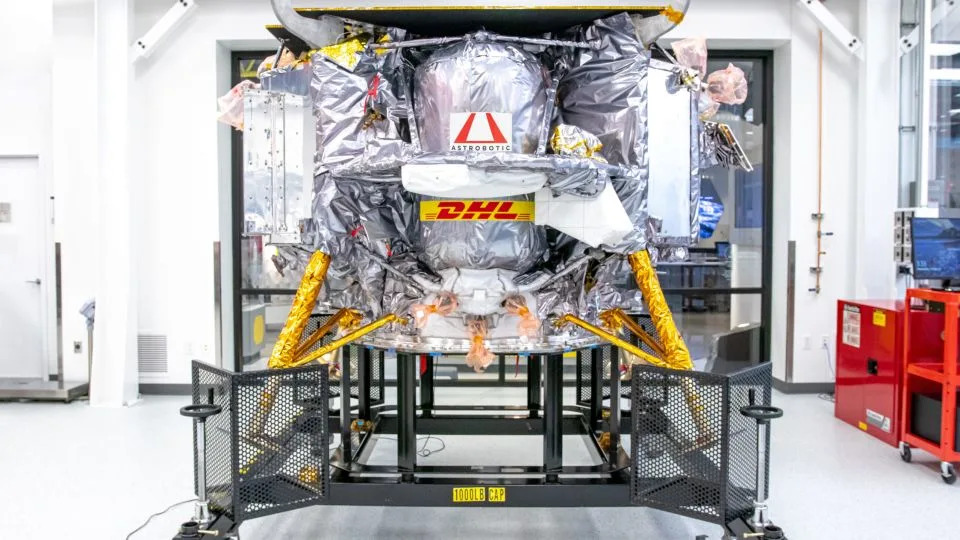
The Peregrine spacecraft is seen in Astrobotic Technology's clean room before shipment to Florida. - Astrobotic Technology
The debate raises new questions at the dawn of a race to colonize the moon about who controls Earth’s only natural satellite.
“No one, and no religion, owns the moon,” Celestis’ CEO told CNN. “If the beliefs of the world’s multitude of religions were considered, it’s quite likely that no missions would ever be approved. Simply put, we do not and never have let religious beliefs dictate humanity’s space efforts. There is not and should not be a religious test.”
Ahasteen argues that Navajo Nation’s intent isn’t to claim the moon.
“We’re saying be respectful. We’re turning the moon into a graveyard and we’re turning it into a waste site,” Ahasteen said. “At what point are we going to stop and say we need to start protecting the moon as we do the Grand Canyon?”
Friday’s meeting convened by the White House is scheduled to feature representatives from NASA, the FAA, the US Department of Transportation, and the Department of Commerce. But Navajo Nation officials have little hope that they will be able to stop Monday’s launch.
“Based off of what we’re seeing, and NASA are already having their pre-launch briefing, it doesn’t look like they have any intention of stopping the launch or removing the remains,” Ahasteen said.
Brett Tingley
Thu, January 4, 2024
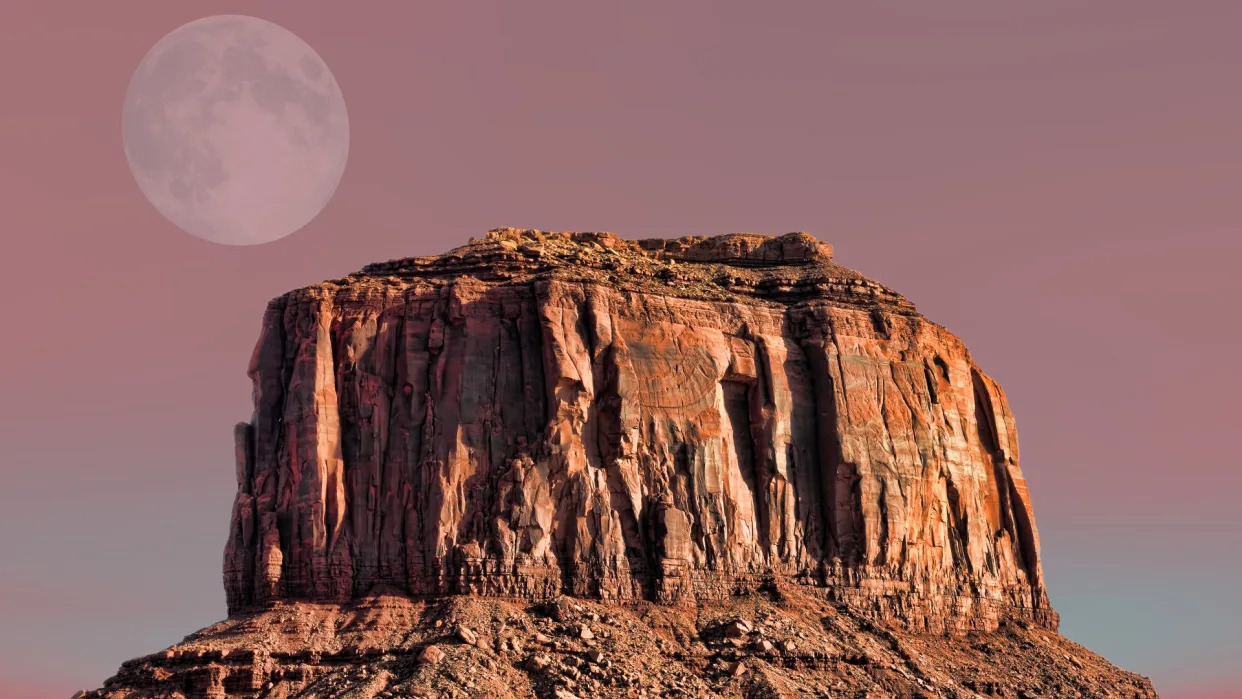
The moon can be seen in the sunset sky over monument valley in arizona.
United Launch Alliance (ULA) and Pittsburgh-based Astrobotic are about to make history.
On Jan. 8, a ULA rocket will send Astrobiotic's Peregrine lander toward the moon. If it lands successfully, Peregrine will become the first private lander ever to reach the lunar surface. The mission will also mark the debut of ULA's new Vulcan Centaur rocket.
Riding on Peregrine are a wide variety of scientific instruments developed by NASA that will pave the way for future lunar exploration as part of the agency's Artemis program. But also tucked away on the mission's manifest are sets of human DNA and remains, which are going up on memorial spaceflights offered by two different companies, Celestis and Elysium Space. Celestis will send one of its memorial payloads off into the final frontier of deep space on its Enterprise mission, while its Tranquility payload will ride to the moon on the Peregrine lander. Elysium Space will also place its own payload on the moon with Peregrine.
In response, the President of the Navajo Nation, Buu Nygren, has filed a formal objection with NASA and the U.S. Department of Transportation over what he calls an act of desecration. "It is crucial to emphasize that the moon holds a sacred position in many Indigenous cultures, including ours," Nygren wrote in a letter dated Dec. 21. "The act of depositing human remains and other materials, which could be perceived as discards in any other location, on the moon is tantamount to desecration of this sacred space." Nygren has asked NASA to delay the mission until the Navajo Nation's objections are addressed.
In a pre-launch science briefing on Thursday (Jan. 4), NASA representatives addressed the controversy over the payloads containing human remains being included on the mission, noting that the mission is a private, commercial effort and that NASA has merely contracted for its scientific payloads to be transported to the moon. "We don't have the framework for telling them what they can and can't fly," said Chris Culbert, Commercial Lunar Payload Services (CLPS) program manager at NASA's Johnson Space Center in Houston. "The approval process doesn't run through NASA for commercial missions."
Related: Navajo Nation objects to private moon mission placing human remains on the lunar surface
Culbert added that the private companies launching payloads as a part of the CLPS program "don't have to clear those payloads" before launch. "So these are truly commercial missions, and it's up to them to sell what they sell," Culbert said.
Joel Kearns, deputy associate administrator for exploration at the Science Mission Directorate at NASA Headquarters, acknowledged that these commercial missions could lead to further controversies.
"With these new opportunities and new ways of doing business, we recognize that some non-NASA commercial payloads can be a cause for concern to some communities," Kearns said. "And those communities may not understand that these missions are commercial and they're not U.S. government missions, like the ones that we're talking about."
RELATED STORIES:
— DNA from 4 American presidents will launch to deep space
— For Astrobotic, big risk (and bigger reward) ride on private Peregrine moon lander's Jan. 8 launch
— 'Star Trek' memorial flight adds 2 more names to its Enterprise mission
Kearns added that some of these commercial payloads could even be used for things like advertising, which could lead to further public outcry.
However, Kearns pointed out that these early missions will allow NASA and other agencies to learn more about how to regulate access to the moon going forward. "We're going to learn through these first landings, and the follow-up landings, all the different issues or concerns that are generated by that. And I'm sure that, as time goes by, there are going to be changes to how we view this, or how industry itself maybe sets up standards or guidelines about how they're going to proceed."
The U.S. government has formed an interagency group to review the Navajo Nation's objections and request for delay, agency representatives added during the briefing.
Celestis, for its part, does not find those objections to be substantive.
"The regulatory process that approves space missions does not consider compliance with the tenets of any religion in the process for obvious reasons. No individual religion can or should dictate whether a space mission should be approved," Celestis CEO and co-founder Charles Chafer said in an emailed statement to Space.com.
"No one, and no religion, owns the moon, and, were the beliefs of the world's multitude of religions considered, it’s quite likely that no missions would ever be approved," Chafer added. "Simply, we do not and never have let religious beliefs dictate humanity’s space efforts — there is not and should not be a religious test."
Editor's note: This story was updated at 6:21 pm ET to reflect that Celestis also has a payload of cremains and DNA riding to the moon on the Peregrine lunar lander, in addition to its payload on the Vulcan Centaur debut flight. It was updated again at 8:50 pm ET to include the statement from Celestis' Charles Chafer.
Navajo object to depositing human remains on Moon
Thu, January 4, 2024
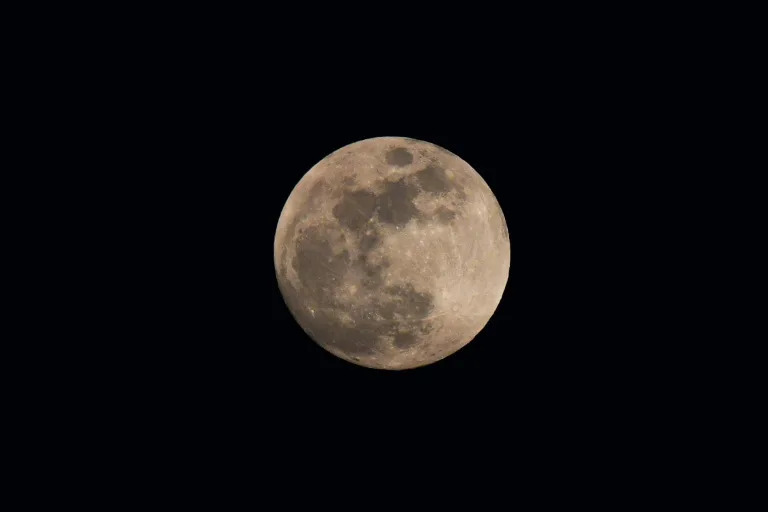
The Navajo Nation, America's largest Indigenous tribe, has raised serious concerns over the presence of human cremated remains on a lunar lander vehicle, calling the mission a "desecration" of the Moon (Ted ALJIBE)
The United States will soon launch its first spacecraft to attempt a soft lunar landing since the Apollo era, in a historic collaboration with the private sector -- but not everyone is celebrating.
The Navajo Nation, America's largest Indigenous tribe, has raised concerns over the presence of human cremated remains on the lander vehicle, calling the mission a "desecration" of the Moon which holds a sacred place in their culture.
On January 8, Pittsburgh-based Astrobotic's Peregrine lander is set to hitch a ride on a giant United Launch Alliance Vulcan Centaur rocket making its maiden voyage under a NASA commercial partnership aimed at saving the US space agency money.
Peregrine's scientific instruments will probe for lunar surface radiation, helping NASA better prepare for crewed missions going there later this decade under the Artemis program.
But the boxy robot's manifest also includes payloads from two companies -- Elysium Space and Celestis -- that will contain cremated remains and DNA to stay on the Moon, inside the lander, forever.
While Elysium hasn't offered details, Celestis has 69 individual "participants" including late Star Trek creator Gene Roddenberry, sci-fi author Arthur C. Clarke, and a dog named Indica-Noodle Fabiano.
Customers paid prices starting at $12,995, according to the company's website.
In a December 21 letter addressed to officials at NASA and the Department of Transportation, Navajo Nation President Buu Nygren expressed what he called "our deep concern and profound disappointment regarding a matter of utmost importance," and called for NASA to delay the launch.
"The Moon holds a sacred position in many Indigenous cultures, including ours," Nygren wrote.
"The act of depositing human remains and other materials, which could be perceived as discards in any other location, on the Moon is tantamount to desecration of this sacred space."
- NASA promises meeting -
Nygren added the situation was reminiscent of the Lunar Prospector mission launched in 1998 by NASA, which intentionally crashed a probe into the Moon's surface. On board were the remains of renowned geologist Eugene Shoemaker.
Then, too, the Navajo voiced objections. NASA apologized and committed to consult with Native Americans in future, according to a contemporary report in The Spokesman-Review of Spokane, Washington.
NASA's deputy associate administrator for exploration Joel Kearns said Thursday an intergovernmental team had arranged a meeting with the Navajo Nation, but added the agency had no control over its private partner's payloads.
"We take concerns expressed from the Navajo Nation very, very, seriously, and we think we're going to be continuing on this conversation," Kearns told reporters.
Celestis was less conciliatory.
"We respect all cultures' right to engage in religious practices, but no single culture or religion should exercise a veto on space missions based on religious tenets," the company said.
Denying that the mission "desecrates the Moon," it stressed the material would remain aboard the lander rather than being deposited on the surface.
Kearns said NASA's growing private partnerships could lead to "changes to how we view this" or to establishing industry standards.
It won't be the first human DNA left on the barren celestial body -- that distinction belongs to the almost 100 bags of feces and urine left behind by American astronauts during the 1969-1972 Apollo lunar landings.
ia/mlm
No comments:
Post a Comment